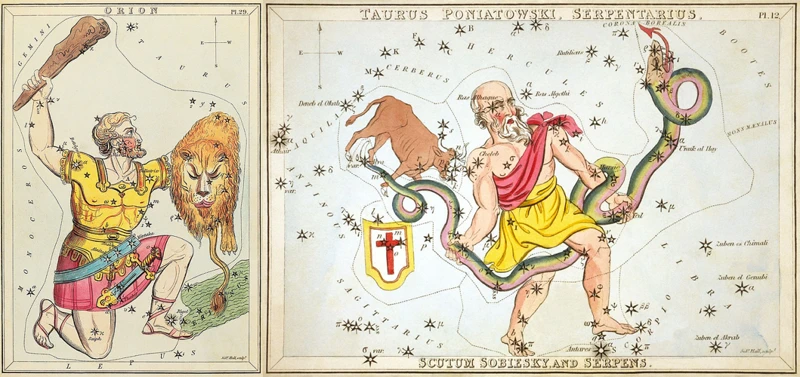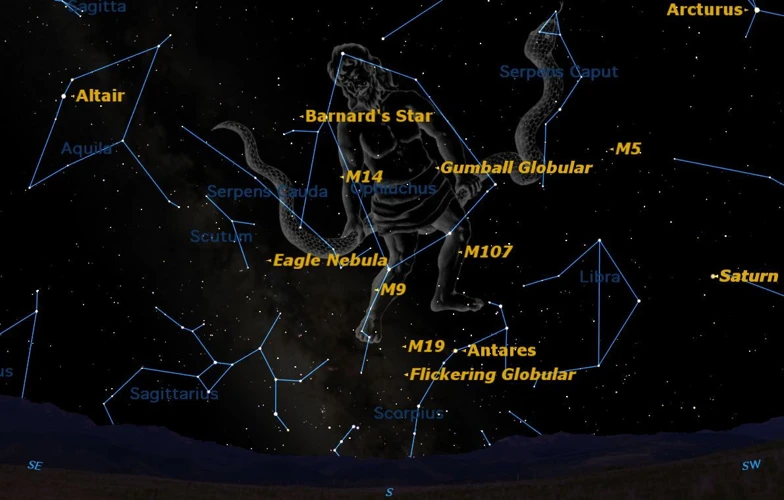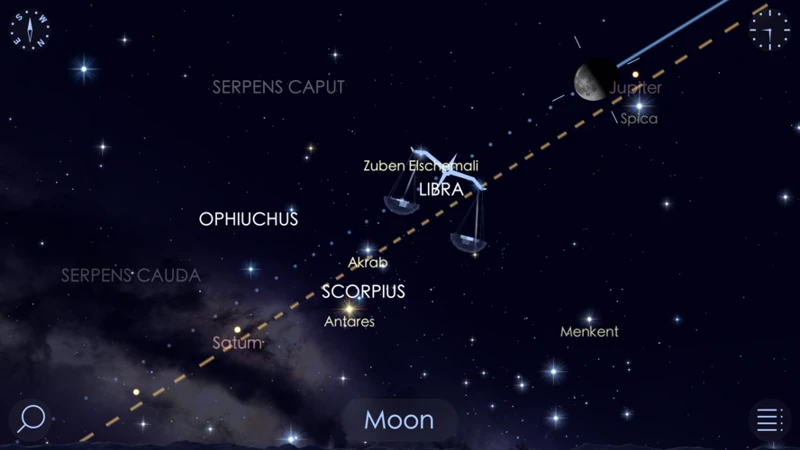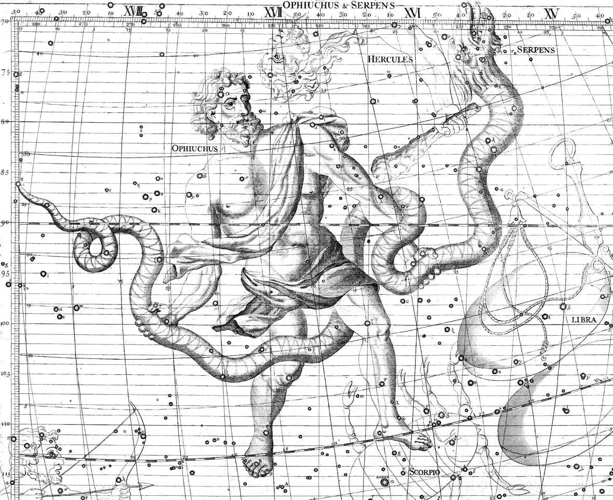A celestial marvel awaits those who cast their gaze towards the heavens in the northern hemisphere. The legendary constellation of Orion, with its captivating story and brilliant stars, has fascinated stargazers for centuries. Step into a world of wonder and exploration as we delve into the rich history, fascinating mythology, and awe-inspiring beauty of Orion, the mighty Hunter. Join us on a cosmic journey as we uncover the secrets of Betelgeuse, Rigel, and the ethereal Orion Nebula, and learn how to locate this iconic constellation in the night sky. Embark on an astronomical and mythological adventure that will leave you spellbound by the captivating power of the stars.
Contents
- The Legend of Orion
- Exploring the Hunter
- Locating Orion in the Sky
- Astronomy and Mythology
- Conclusion
-
Frequently Asked Questions
- What is the significance of the Orion constellation?
- How many stars make up the Orion constellation?
- What is the story behind Betelgeuse and Rigel?
- What is the significance of the Orion Nebula?
- How can I locate the Orion constellation in the sky?
- Is the Orion constellation visible all year round?
- What is the role of Orion in different cultures?
- How has Orion influenced astrology?
- Are there any other celestial objects within Orion?
- Can I observe Orion with the naked eye?
- References
-
Frequently Asked Questions
- 1. Why is the constellation Orion called “The Hunter”?
- 2. What is the story behind the origin of Orion?
- 3. What are some stars in the constellation Orion with interesting stories?
- 4. Tell me more about Betelgeuse, the brilliant red giant in Orion.
- 5. What makes Rigel a radiant blue supergiant?
- 6. What is the significance of the Orion Nebula?
- 7. How can I locate Orion in the night sky?
- 8. Can I observe Orion throughout the year, or is it seasonal?
- 9. How is Orion represented in different cultures around the world?
- 10. What is the influence of Orion on astrology?
- References
- Read More
The Legend of Orion

The Legend of Orion is steeped in myth and wonder, captivating the imagination of cultures throughout history. According to Greek mythology, Orion was a mighty hunter born to the god Poseidon and Euryale, a Gorgon. With his unparalleled archery skills, Orion roamed the earth, hunting ferocious beasts. His exploits caught the attention of the goddess Artemis, who admired his strength and bravery. However, Orion’s fate took a tragic turn when he met his demise at the hands of a giant scorpion. The gods then immortalized the hunter in the night sky, placing him as a constellation for eternity. The story of Orion continues to inspire and fascinate astronomers and storytellers alike, connecting the realms of myth and astronomy in a celestial tapestry.
If you’re interested in learning more about the final stages of a star’s life, you can read our article on white dwarfs. Or, if mythical creatures are more your interest, discover the fascinating story of the birth of Pegasus, the mythical winged horse. Additionally, if you want to delve into the incredible world of meteors and their impact on astronomy and space exploration, we have an informative article available at this link.
The Hunter’s Origin
Throughout different mythologies and cultures, the origin of the Hunter constellation, Orion, is a fascinating tale. In Greek mythology, Orion was believed to be the son of the sea god Poseidon and Euryale, a Gorgon. Raised by the centaur Chiron, Orion became known for his unmatched hunting skills and extraordinary strength. He traveled across lands and encountered numerous adventures, crossing paths with gods and mortals alike. However, it was his tragic encounter with a giant scorpion that brought an end to his earthly journey. According to legend, the goddess Artemis, who admired Orion greatly, placed his likeness among the stars as a constellation, ensuring his immortality. In Egyptian mythology, Orion was associated with the god Osiris, representing his resurrection and rebirth. The Hunter’s origin is not limited to Greek and Egyptian mythologies alone; similar stories can be found in other ancient cultures, highlighting the universal appeal and enduring fascination of this celestial figure.
Stars with a Story to Tell
The constellation of Orion is adorned with stars that not only dazzle with their brilliance but also carry captivating tales from ancient mythology. Let’s embark on a celestial journey and discover the stories behind some of these stars.
Star Mythological Tale Betelgeuse Named after the Arabic phrase “Ibt al-Jauzā,” meaning “the armpit of Orion,” Betelgeuse is a red supergiant and one of the most well-known stars in the night sky. According to mythology, Betelgeuse marks Orion’s right shoulder, representing his great strength and power. Rigel Rigel is a brilliant blue supergiant star in Orion’s left foot. Named after the Arabic word for “foot,” Rigel is said to represent Orion’s left leg and is associated with his swiftness and agility as a hunter. The Orion Nebula The Orion Nebula, also known as Messier 42, is a breathtaking stellar nursery where new stars are born. In mythology, this cosmic wonder is believed to be the result of Orion’s sword being transformed into a nebula by the gods, symbolizing the eternal glory of the mighty Hunter.
These celestial bodies not only add to the beauty of the constellation but also carry the essence of Orion’s legend. With their radiance lighting up the night sky, Betelgeuse, Rigel, and the Orion Nebula invite us to gaze upon the magnificence of the heavens and imagine the storied past they embody.
Exploring the Hunter

Embark on a thrilling journey through the cosmos as we explore the mesmerizing features of Orion, the Hunter. This celestial masterpiece is adorned with stars that have stories to tell and cosmic wonders to behold. One such star is Betelgeuse, a brilliant red giant that shines with an unmatched radiance. Its fiery glow captivates the eye and has fascinated astronomers for centuries. Another star in Orion’s constellation is Rigel, a radiant blue supergiant that dazzles with its intense luminosity. These celestial giants astound us with their sheer brilliance and serve as beacons in the sky. But the wonders of Orion don’t end there. Set your sights on the Orion Nebula, a cosmic nursery where stars are born. This ethereal cloud of gas and dust is a haven for stellar birth, with its swirling colors and mesmerizing patterns. Exploring the Hunter’s features fills us with wonder and inspires us to gaze deeper into the vastness of space, marveling at the complexity and beauty that the universe holds.
Betelgeuse: The Brilliant Red Giant
Betelgeuse, dubbed the “Brilliant Red Giant,” is a star that commands attention in the constellation of Orion. Located approximately 640 light-years away from Earth, Betelgeuse is one of the largest and most luminous stars known to us. Its distinct reddish hue is striking, and it shines with an intensity that is hard to miss in the night sky. In fact, Betelgeuse is so massive that if it were placed at the center of our solar system, its outer surface would extend beyond the orbit of Mars. This massive size is a result of Betelgeuse being in the later stages of its life, having exhausted its nuclear fuel and expanded into a red giant. As a red supergiant star, Betelgeuse burns brightly, radiating immense amounts of energy into space. Its diameter measures around 1,000 times that of our Sun, making it a true cosmic giant. Scientists predict that Betelgeuse’s extravagant display may be short-lived, as it is rapidly consuming its remaining nuclear fuel. There is much excitement and speculation among astronomers about the possibility of Betelgeuse going supernova, a catastrophic event that would light up our night sky for weeks or even months. This looming uncertainty only adds to the allure and intrigue surrounding this brilliant red giant, making it a captivating and captivating subject of study for astronomers and stargazers alike.
Rigel: The Radiant Blue Super giant
Rigel, the radiant blue supergiant, is one of the most prominent stars in the constellation of Orion. Located in the left foot of the hunter, Rigel shines brightly in the night sky, captivating observers with its intense blue-white glow. It is the seventh brightest star in the entire night sky, and its luminosity surpasses that of our own Sun by an astonishing factor of 120,000. Rigel is not only visually striking but also boasts impressive physical characteristics. It is estimated to be approximately 22 times more massive than the Sun and shines with an intrinsic brightness thousands of times greater. The star’s immense size and mass have caused it to evolve rapidly, making it an intermediate stage in stellar evolution, between a main-sequence star and a supernova. Rigel’s enormous energy output propels it to burn through its nuclear fuel at an accelerated rate, causing it to shine brilliantly. This supergiant star is not alone; Rigel is actually a triple star system, consisting of an inner binary pair and a distant companion. The exact nature of these companions is still being studied and understood. Rigel’s colossal presence and fascinating characteristics make it a captivating subject of study for astronomers, providing valuable insights into the life cycle of massive stars.
The Orion Nebula: A Cosmic Nursery
The Orion Nebula, also known as Messier 42 or M42, is a breathtaking sight within the constellation of Orion. It is one of the most well-studied and photographed objects in the night sky. Located about 1,344 light-years away from Earth, this cosmic wonder is a stellar nursery where new stars are born.
– Stellar Nurseries: The Orion Nebula is a giant cloud of gas and dust, stretching over 24 light-years across. Within this nebula, there are vast regions of hydrogen gas where stars are forming. These regions, known as stellar nurseries, are filled with dense pockets of gas and dust. The immense gravitational forces within these regions cause the gas and dust to collapse under their own weight, eventually leading to the birth of new stars.
– Star Formation: Deep within the Orion Nebula, these collapsing pockets of gas and dust give birth to young, hot stars. These stars, known as protostars, are in the earliest stages of their formation. As the protostar continues to gather more mass from its surrounding material, it grows hotter and brighter. Eventually, nuclear fusion ignites at its core, marking the birth of a new star.
– The Trapezium Cluster: At the very heart of the Orion Nebula lies a cluster of young stars known as the Trapezium Cluster. These stars, numbering in the hundreds, are only a few hundred thousand years old. They emit intense ultraviolet radiation, which causes the surrounding gas to glow brightly. The dazzling glow of the Trapezium Cluster adds to the otherworldly beauty of the nebula.
– Nebula Dynamics: The Orion Nebula is a dynamic environment, with ongoing processes of star formation, stellar winds, and even supernova explosions. Stellar winds from the newly formed stars blow away the surrounding gas and dust, creating expansive cavities within the nebula. Over time, the intense radiation and winds from these stars will shape and alter the structure of the nebula, erasing its appearance as a stellar nursery.
The Orion Nebula is not only a captivating sight for astronomers but also serves as a window into the fascinating process of star birth. Its ethereal beauty and profound significance make it a celestial wonder that continues to captivate and inspire stargazers and scientists alike.
Locating Orion in the Sky

Finding the mesmerizing constellation of Orion in the vast expanse of the night sky is an awe-inspiring journey in itself. To locate Orion, begin by searching for three distinctive stars that form his belt. These bright stars, named Alnitak, Alnilam, and Mintaka, create a straight line across the night sky. Lying perpendicular to the belt, you’ll find two stars that represent Orion’s shoulders, Betelgeuse and Bellatrix. To locate Orion’s feet, look below the belt for two more stars, Saiph and Rigel. When Orion is at its highest point in the sky during the winter months in the Northern Hemisphere, it becomes a striking sight. Simply gazing upon this celestial hunter fills one with a sense of wonder and a connectedness to the vastness of the universe. Take a moment to locate Orion in the sky and let its majesty fuel your imagination and curiosity.
Identifying the Hunter
Identifying the Hunter, Orion, in the night sky is a task that can be accomplished with a few simple steps. Let’s dive into the process of locating this iconic constellation.
1. Look for the distinctive three-star belt: One of the easiest ways to identify Orion is by locating its three bright stars in a row, known as Orion’s Belt. These stars, Mintaka, Alnilam, and Alnitak, form a straight line and are often the first feature of Orion that catches the eye.
2. Observe the surrounding stars and shape: Once you’ve found the belt, you can use it as a guide to explore the rest of the constellation. Above the belt, two bright stars mark Orion’s shoulders, Betelgeuse to the upper left and Bellatrix to the upper right. Below the belt, two more stars represent Orion’s legs, Saiph to the lower left and Rigel to the lower right. Together, these stars create a distinctive hourglass or bowtie shape that is characteristic of Orion.
3. Follow the celestial “sword” for additional details: Hanging from Orion’s Belt, you will find a vertical row of three stars known as the Orion’s Sword. This “sword” contains a famous stellar nursery called the Orion Nebula. The nebula appears as a hazy patch of light, and with a pair of binoculars or a telescope, you can observe its glowing gas clouds and young stars.
Remember that Orion’s position in the sky changes throughout the year due to Earth’s orbit around the Sun. It is helpful to consult a sky map or a star-gazing app to determine Orion’s current position and visibility in your location.
By using these identifying features and understanding the seasonal positioning, you’ll be able to effortlessly locate the magnificent Hunter, Orion, in the vast expanse of the night sky.
Seasonal Visibility
– Winter: During the winter months in the northern hemisphere, Orion is at its peak visibility. The constellation rises in the east in the early evening and is visible throughout the night. Its prominent three-star belt, consisting of Alnitak, Alnilam, and Mintaka, is easily identifiable and acts as a guide to locate Orion in the sky. The bright stars Betelgeuse and Rigel shine brightly, adding to the enchantment of this celestial spectacle.
– Spring: As spring approaches, Orion begins to set earlier in the evening. However, it can still be observed in the western sky during the early evening hours. Look for the constellation as it descends towards the horizon, bidding farewell until the next winter season.
– Summer: During the summer months, Orion isn’t visible in the night sky as it is located below the horizon. Stargazers must wait patiently for the return of winter to once again witness the majestic Hunter in all its glory.
– Fall: In the fall, Orion begins to rise in the early morning hours, gradually becoming more visible as the season progresses. By late fall, it can be seen rising in the eastern sky before sunrise, setting the stage for its grand appearance during the upcoming winter nights.
Whether it’s the crisp winter air, the fresh blossoms of spring, the warm glow of summer nights, or the vibrant colors of autumn, each season offers a different perspective of the celestial marvel that is Orion. So mark your calendars, cherish the changing seasons, and wait with anticipation for Orion to rise again, showcasing its legendary presence in the night sky.
Astronomy and Mythology

Astronomy and mythology have a long and intertwined history, with celestial objects often playing prominent roles in ancient stories and beliefs. Orion, with its striking appearance and captivating legend, has influenced cultures around the world. In different cultures, Orion represents various figures such as a powerful hunter, a giant, or a deity. One example is the ancient Egyptians, who associated Orion with Osiris, the god of the afterlife. In Norse mythology, Orion links to the figure of Odin, the All-Father and ruler of the gods. Orion’s influence extends to astrology, where it is considered a zodiacal constellation. People born under the sign of Orion are believed to possess traits such as strength, determination, and a strong connection to nature. The blending of astronomy and mythology shows the enduring human desire to find meaning in the stars above and connect our earthly stories to the vastness of the cosmos.
Orion in Different Cultures
The myth and significance of Orion extend far beyond Ancient Greece, with numerous cultures incorporating this iconic constellation into their folklore and traditions. Let’s explore how Orion has been interpreted in different cultures:
- Egyptian Mythology: In ancient Egypt, Orion was associated with the mighty god Osiris, who was believed to be the god of the afterlife and resurrection. The alignment of the three stars of Orion’s Belt was said to represent the celestial pathway to Osiris.
- Native American Tribes: Native American tribes saw a great warrior in Orion, often associating it with stories of bravery and protection. The Lakota tribe, for example, viewed the constellation as a hunter who guided warriors through battle.
- Maori Culture: The indigenous Maori people of New Zealand referred to Orion as “Te Tirohanga-whakamutunga o te Tiriti-pounamu,” which translates to “The last glimpse of the light before the dawn.” They considered the constellation an important navigational guide and marker of seasonal changes.
- Chinese Mythology: Orion has an interesting counterpart in Chinese mythology known as Shen, a god with three bright stars representing his body, heart, and head. The Chinese believed that when Orion appeared in the sky, it ushered in good fortune and bountiful harvests.
These are just a few examples of how cultures around the world have attributed significance and meaning to Orion. The versatile nature of this constellation shows its universal appeal and timeless allure, connecting people across different continents and generations through the captivating wonders of the night sky.
Orion’s Influence on Astrology
Orion’s Influence on Astrology:
Orion, with its prominent position in the night sky and its fascinating mythology, has also made a significant impact on astrology. In astrology, Orion is associated with themes of strength, courage, and protection. People born under the influence of Orion are said to possess these qualities in abundance, making them natural leaders and warriors.
In Western astrology, Orion is often associated with the zodiac sign of Sagittarius. Like the archer in the constellation, Sagittarians are thought to be adventurous, optimistic, and ambitious individuals. They possess a strong desire for knowledge and love exploring new horizons.
Orion’s influence extends beyond the Western zodiac as well. In Chinese astrology, the Hunter is associated with the zodiac sign of the Rat, which is considered intelligent, resourceful, and adaptable. Individuals born under this sign are believed to possess a sharp wit and strong instincts.
Orion’s influence is not limited to individual horoscopes. It also holds significance in astrological events and transits. When certain planets align with the constellation, their combined energy is said to amplify the qualities attributed to Orion. These alignments are believed to bring forth opportunities for personal growth, empowerment, and success.
Astrologers often pay attention to the position of Orion in the sky to interpret its influence on individual birth charts and planetary alignments. They analyze the placement of stars within the constellation to gain deeper insights into a person’s character, strengths, and challenges.
The mighty presence of Orion in the night sky has left an indelible mark on astrology. Its association with strength, courage, and adventure has influenced interpretations of zodiac signs, birth charts, and astrological events. Whether you seek empowerment, guidance, or a deeper understanding of yourself, the celestial Hunter continues to inspire astrologers and individuals alike with its mystical influence.
Conclusion

In conclusion, exploring the Hunter constellation in the northern hemisphere is an awe-inspiring journey that combines mythology, astronomy, and the wonders of the night sky. The legend of Orion, with its origins in Greek mythology, adds a touch of enchantment to our understanding of the stars. From Betelgeuse, the brilliant red giant, to Rigel, the radiant blue supergiant, and the captivating Orion Nebula, the hunter’s story comes to life through these celestial gems. Locating Orion in the sky allows us to connect with ancient civilizations and their fascination with the cosmos. Furthermore, the influence of Orion extends beyond mythology, as it has played a significant role in astrology throughout history. The constellation’s distinct shape and prominent stars have been interpreted and revered in various cultures worldwide. Embarking on a journey to explore Orion is an opportunity to marvel at the cosmic wonders above and to appreciate the timeless connection between humans and the stars. Let the tale of the Hunter constellation inspire you to gaze upwards and contemplate the vastness and beauty of the universe.
Frequently Asked Questions

What is the significance of the Orion constellation?
The Orion constellation holds great significance in astronomy and mythology. It is easily recognizable and has played a significant role in various cultural and navigational practices throughout history.
How many stars make up the Orion constellation?
The Orion constellation is composed of several prominent stars, including Betelgeuse, Rigel, Bellatrix, and Saiph. These stars, along with others, form the distinctive hunter figure.
What is the story behind Betelgeuse and Rigel?
Betelgeuse is a brilliant red giant star, one of the largest and most massive stars known. Rigel, on the other hand, is a radiant blue supergiant star. Their contrasting colors and magnitudes make them fascinating objects to study and admire in the night sky.
What is the significance of the Orion Nebula?
The Orion Nebula, located within the Orion constellation, is a cosmic nursery where new stars are born. This nebula provides astronomers with valuable insights into the process of star formation.
How can I locate the Orion constellation in the sky?
To locate the Orion constellation, look for the distinctive three-star belt formation in the night sky. The belt is aligned diagonally and stands out among neighboring stars, making it relatively easy to find.
Is the Orion constellation visible all year round?
Yes, the Orion constellation is visible throughout the year, but its position in the sky may vary depending on the season. During winter months in the northern hemisphere, Orion is most prominently visible in the evening sky.
What is the role of Orion in different cultures?
Orion holds significance in various cultures and mythologies, from Greek and Roman mythology to ancient Egyptian and Native American folklore. Each culture attributes unique stories and interpretations to this prominent constellation.
How has Orion influenced astrology?
In astrology, Orion is associated with various traits and personality characteristics. It is often linked to strength, courage, and a determined nature. Individuals born under the influence of Orion may exhibit these qualities.
Are there any other celestial objects within Orion?
Apart from the stars and the Orion Nebula, there are other objects of interest within the constellation. These include the Horsehead Nebula, the Flame Nebula, and the famous Orion’s Belt, which is composed of three aligned stars.
Can I observe Orion with the naked eye?
Absolutely! Orion is one of the most easily recognizable and brilliant constellations in the night sky. It can be observed without the need for telescopes or binoculars, making it accessible to stargazers of all levels.
References
- Discovering the Universe Through the Constellation Orion
- The Great Hunter: Orion
- Orion the Hunter, the world’s most recognizable constellation
Frequently Asked Questions

1. Why is the constellation Orion called “The Hunter”?
The constellation Orion got its nickname “The Hunter” due to its depiction in ancient mythology. In Greek mythology, Orion was a skilled hunter and was eventually placed among the stars as a constellation by the gods.
2. What is the story behind the origin of Orion?
According to Greek mythology, Orion was said to be the son of Poseidon, the god of the sea. He was known for his exceptional strength and hunting abilities. However, his life came to an unfortunate end when he was stung by a scorpion, which led to his immortalization as the constellation Orion.
3. What are some stars in the constellation Orion with interesting stories?
The constellation Orion is home to several stars with fascinating stories. For example, Betelgeuse, one of the brightest stars in the night sky, is a red giant nearing the end of its life. Rigel, on the other hand, is a massive blue supergiant, shining brightly in the constellation.
4. Tell me more about Betelgeuse, the brilliant red giant in Orion.
Betelgeuse, also known as Alpha Orionis, is a massive red giant star located in the shoulder of Orion. It is notable for its striking reddish-orange color and is one of the largest known stars. Astronomers believe that Betelgeuse will eventually explode in a supernova, although the exact timing is uncertain.
5. What makes Rigel a radiant blue supergiant?
Rigel, or Beta Orionis, is a bright blue supergiant star in the Orion constellation. It is known for its dazzling blue color and immense brightness. Rigel is approximately 40,000 times more luminous than our Sun and is estimated to be around 8 to 9 million years old.
6. What is the significance of the Orion Nebula?
The Orion Nebula, also known as Messier 42, is a famous stellar nursery within the constellation Orion. It is a vast cloud of gas and dust where new stars are born. The nebula is visible to the naked eye and has captivated astronomers for centuries with its stunning beauty and potential for understanding star formation.
7. How can I locate Orion in the night sky?
Locating Orion in the night sky is relatively easy, especially during the winter months in the Northern Hemisphere. Look for three bright stars that form Orion’s Belt, which are aligned diagonally. These stars are Alnitak, Alnilam, and Mintaka. Orion’s Belt will guide you to the rest of the constellation.
8. Can I observe Orion throughout the year, or is it seasonal?
While Orion is visible in the night sky throughout the year, its visibility varies depending on the season. In the Northern Hemisphere, Orion is most prominent during the winter months, appearing high in the sky. During other seasons, it may appear lower on the horizon but is still visible.
9. How is Orion represented in different cultures around the world?
Orion holds significance in various cultures worldwide. In ancient Egyptian mythology, Orion was associated with Osiris, the god of the afterlife. In Norse mythology, he was associated with the god Odin. Different cultures have their own interpretations and stories surrounding the constellation Orion.
10. What is the influence of Orion on astrology?
In astrology, Orion is associated with strength, courage, and leadership. People born under the sign of Orion are believed to possess these qualities and are often seen as natural-born leaders. Orion’s position in the zodiac and its alignment with other celestial bodies can also influence astrological predictions and personality traits.







